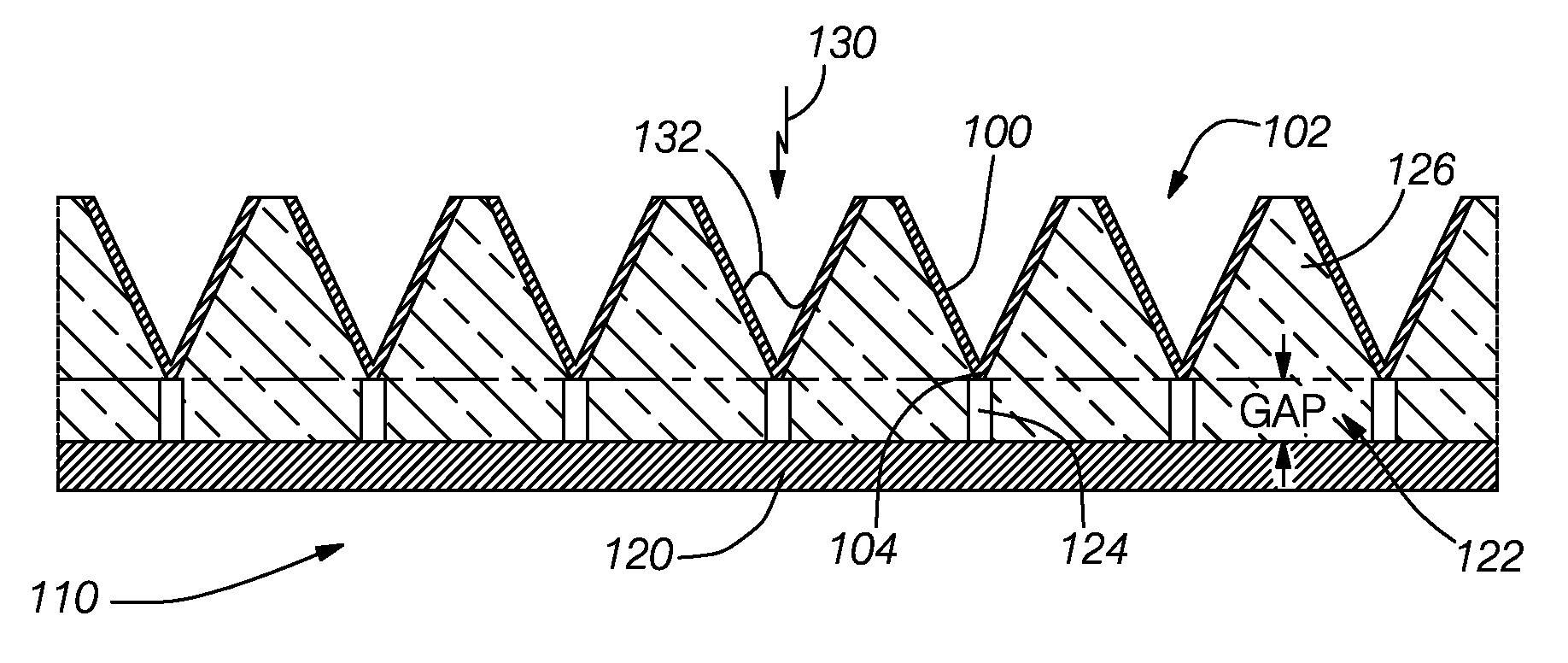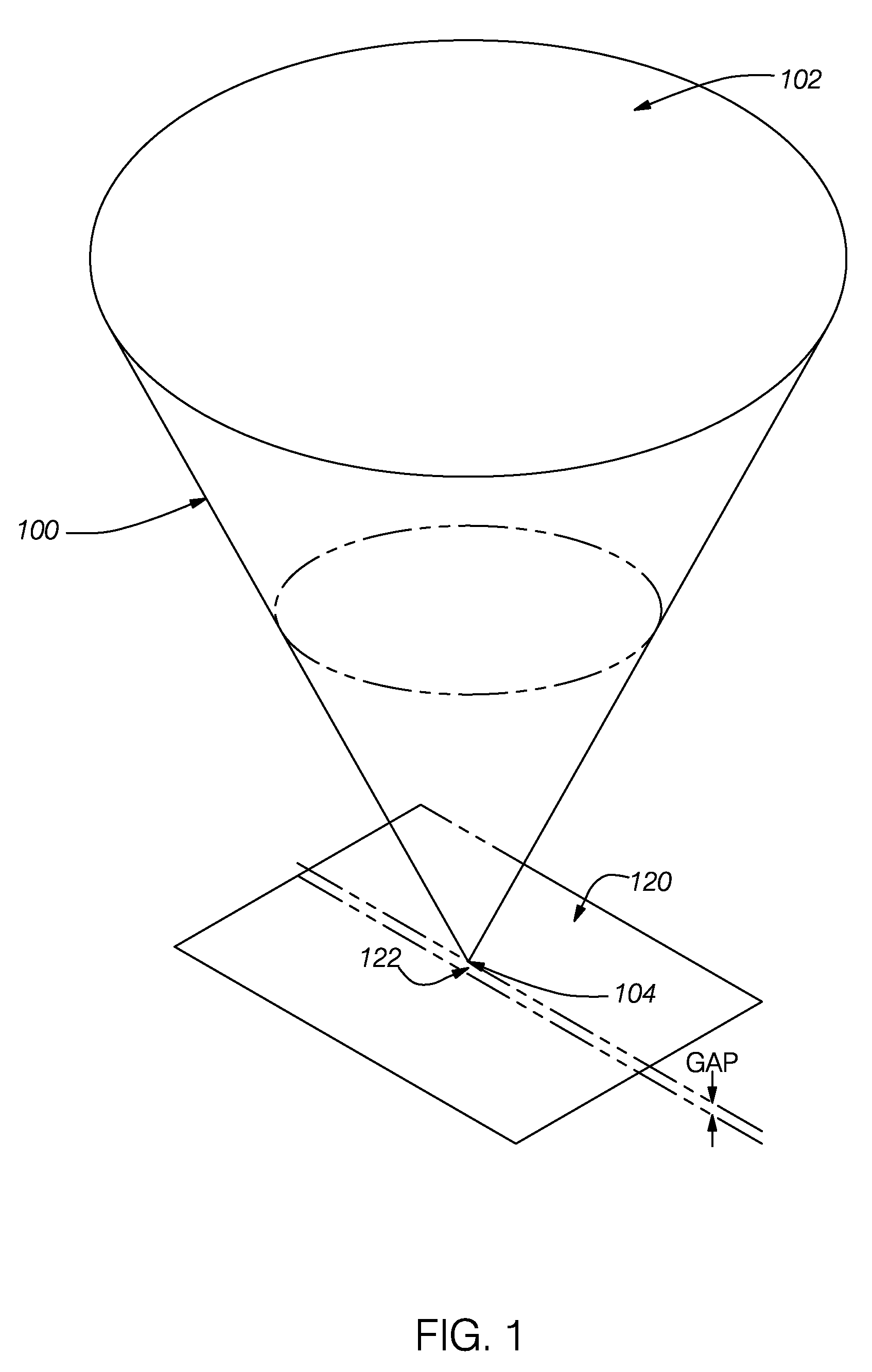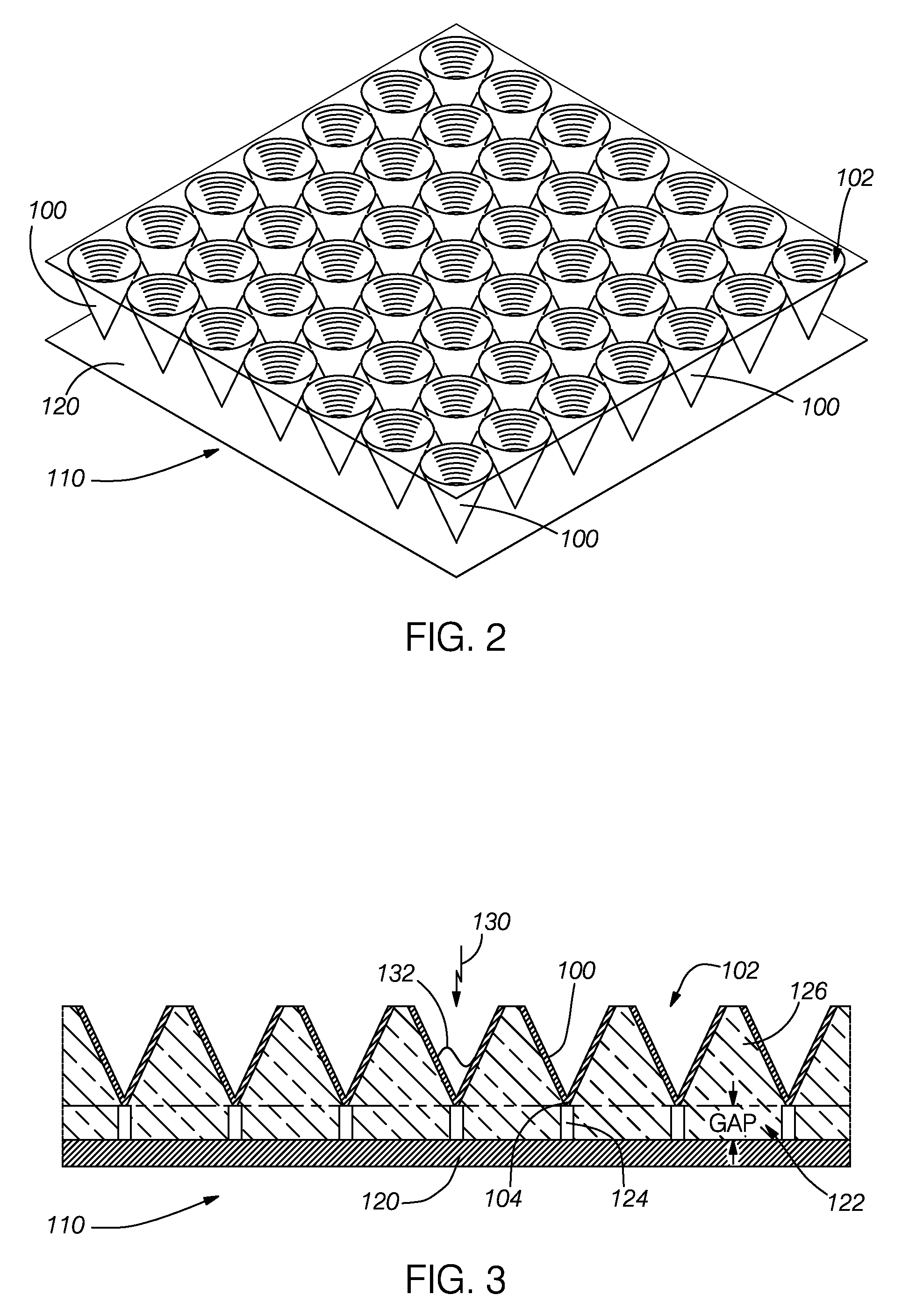Photo induced enhanced field electron emission collector
a photo-induced enhanced field and electron emission collector technology, applied in the field of light energy collection, can solve the problems of limited physical energy collection efficiency of pv technology, high cost of materials and manufacturing process, high cost of pure wafer production, etc., and achieve the effect of removing quantum bandgap restrictions, and improving the collection efficiency of electromagnetic radiation
- Summary
- Abstract
- Description
- Claims
- Application Information
AI Technical Summary
Benefits of technology
Problems solved by technology
Method used
Image
Examples
Embodiment Construction
[0036]The drawings and the following description illustrate preferred embodiments of a system and method for implementing the present invention. Other shapes and configurations may also be used to create the disclosed effect of collecting the electric field from the electromagnetic wave and funneling the electric field to a localized field region above a conducting plane were electrons are emitted from the distress field point or line.
[0037]FIG. 1 illustrates a perspective view of a conical waveguide collecting structure 100 of a preferred embodiment of the system and method disclosed herein. The collecting structure comprises a conducting material that tapers from a base 102 to a point 104. Preferably, the conducting material is a thin conducting film. For example, the conducting material advantageously comprises graphene (a honeycomb crystal lattice of densely packed carbon atoms in a one-atom-thick planar sheet) or other carbon materials that are electrical conducting. The conduc...
PUM
 Login to View More
Login to View More Abstract
Description
Claims
Application Information
 Login to View More
Login to View More - R&D
- Intellectual Property
- Life Sciences
- Materials
- Tech Scout
- Unparalleled Data Quality
- Higher Quality Content
- 60% Fewer Hallucinations
Browse by: Latest US Patents, China's latest patents, Technical Efficacy Thesaurus, Application Domain, Technology Topic, Popular Technical Reports.
© 2025 PatSnap. All rights reserved.Legal|Privacy policy|Modern Slavery Act Transparency Statement|Sitemap|About US| Contact US: help@patsnap.com



